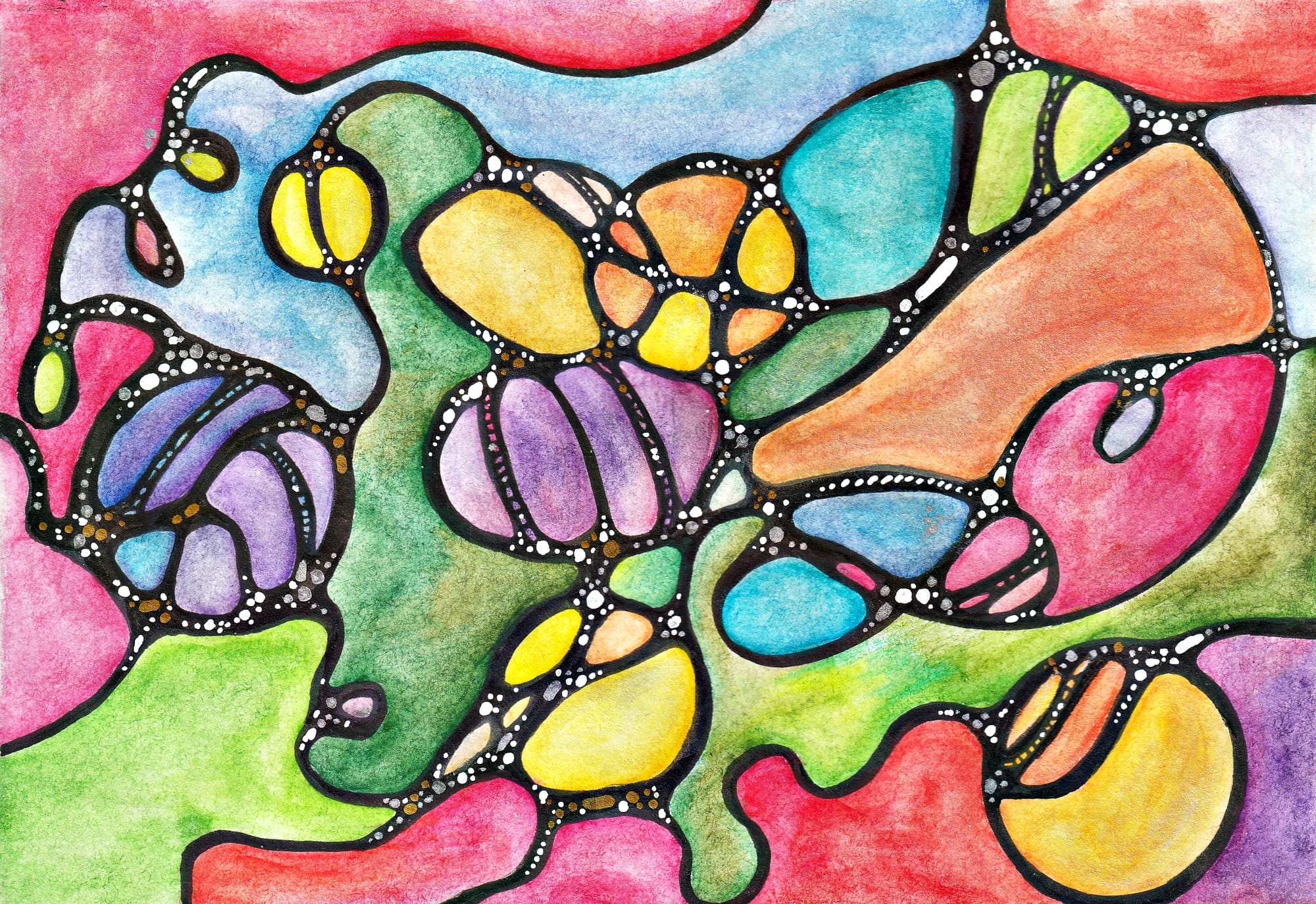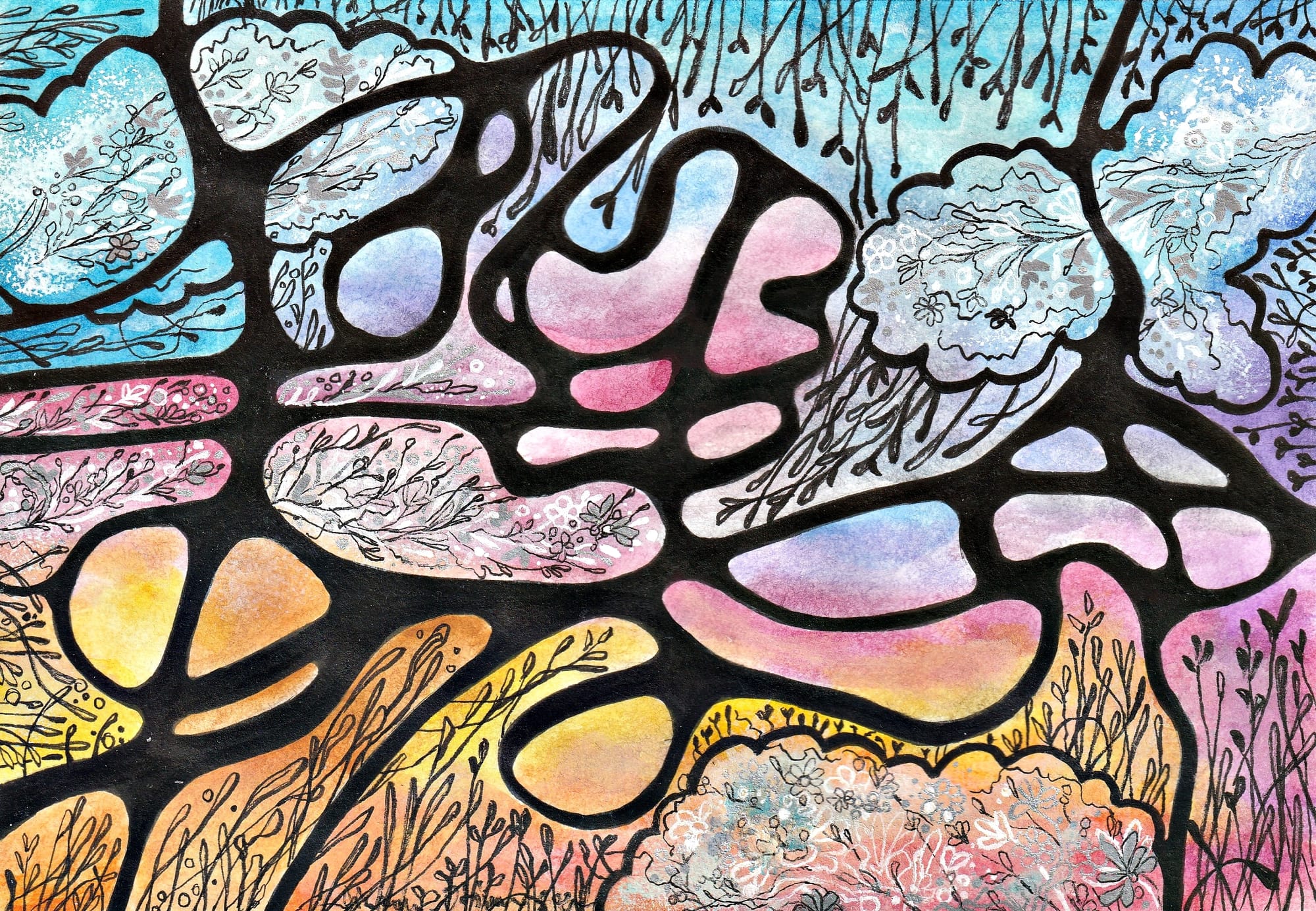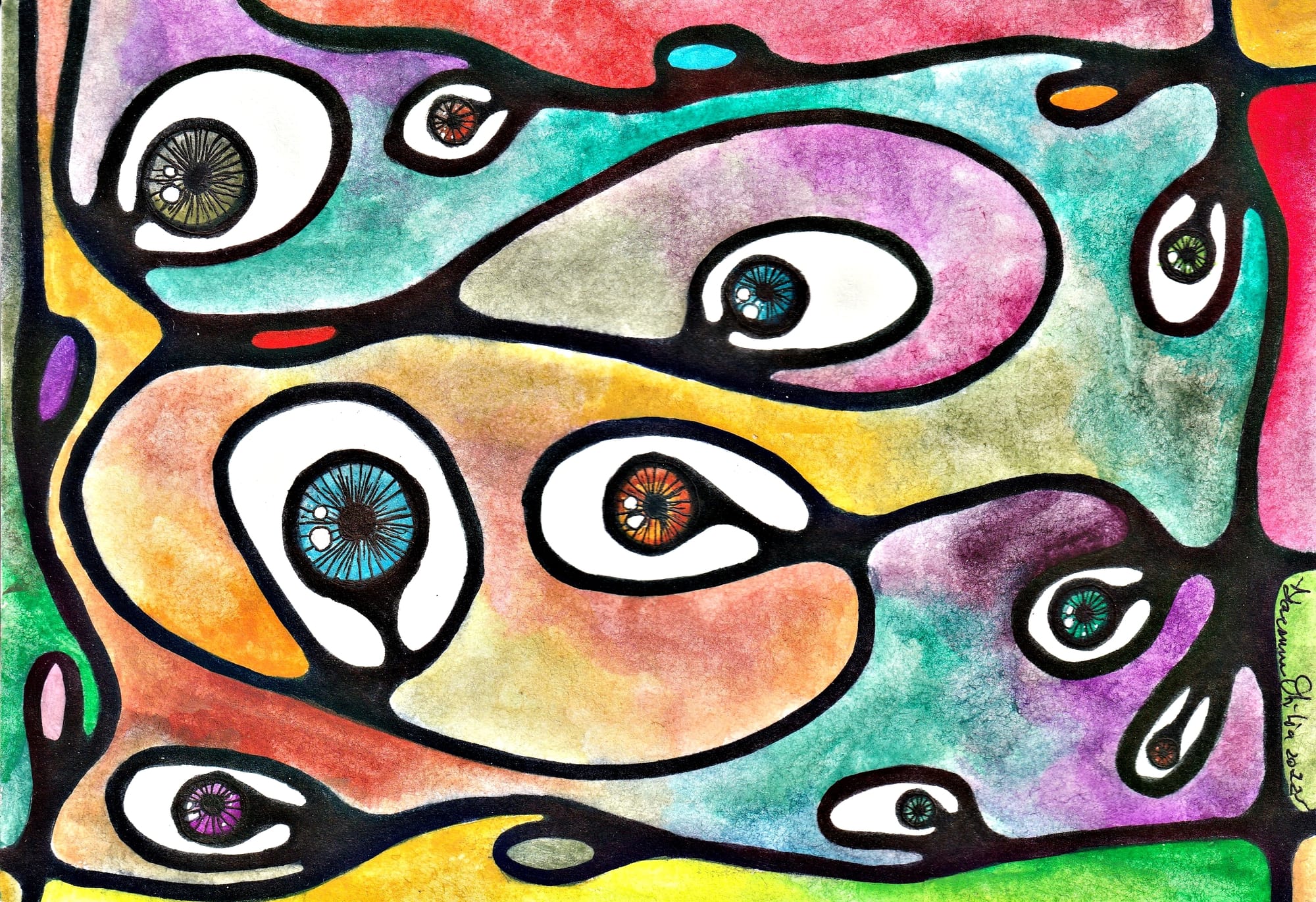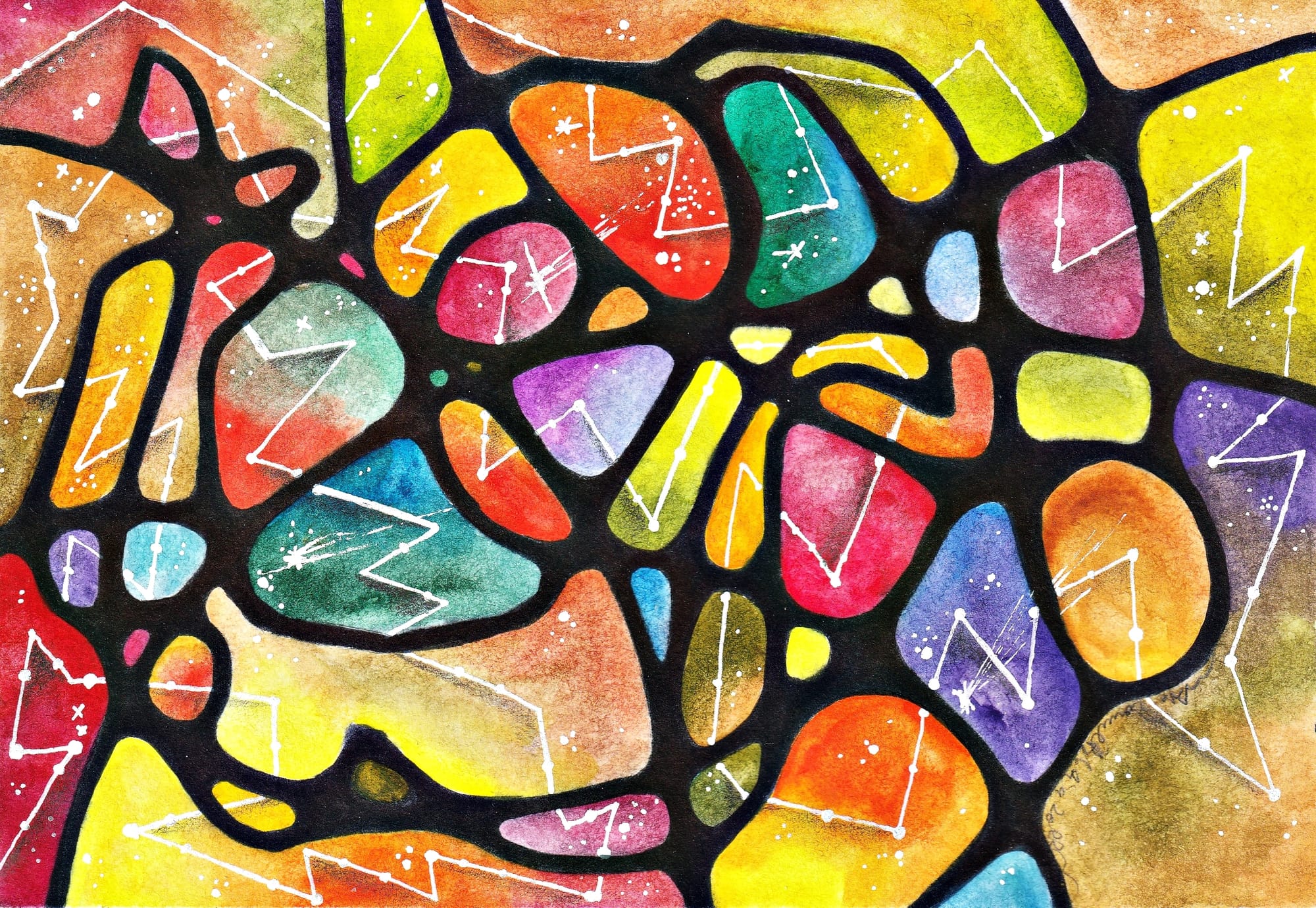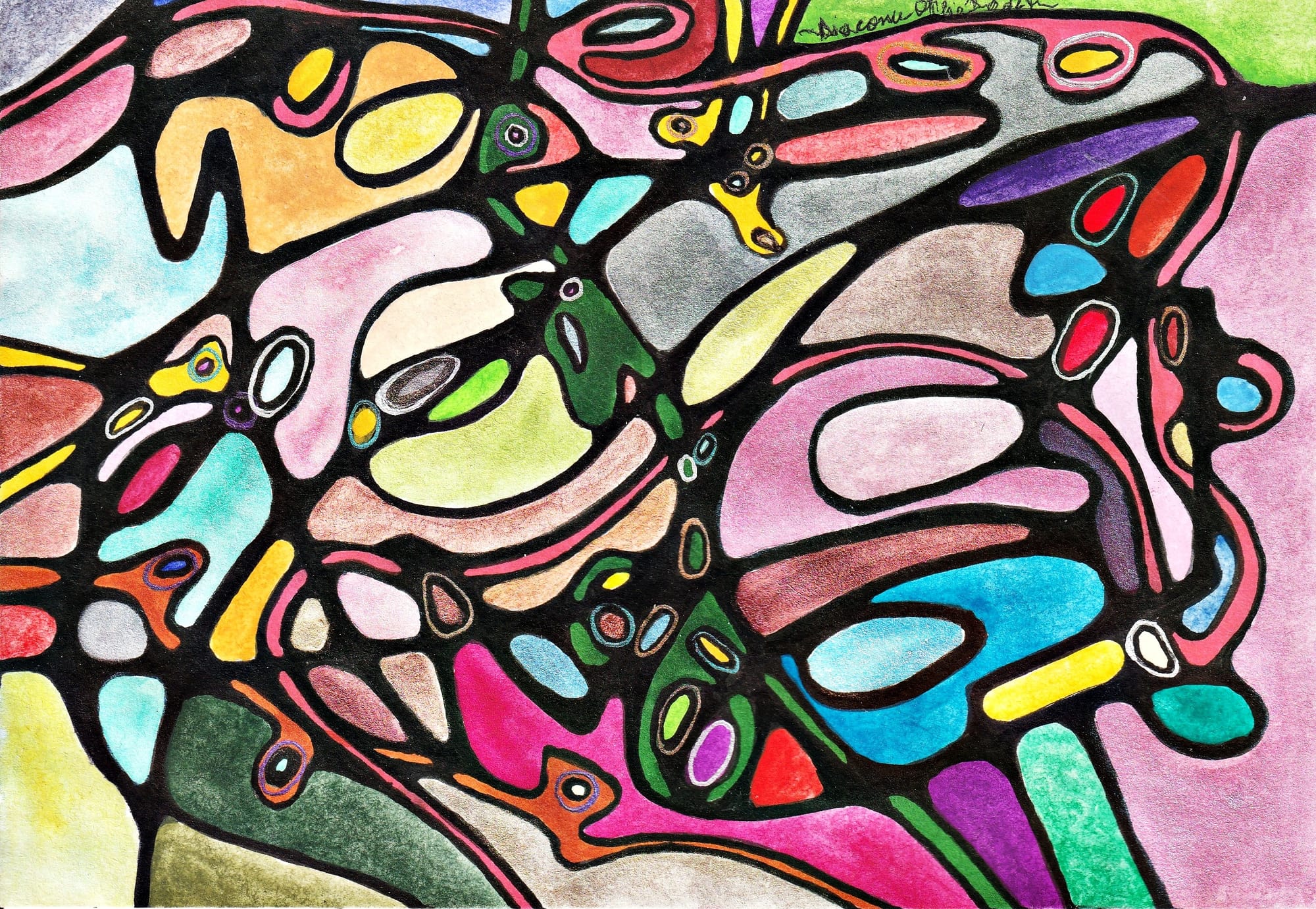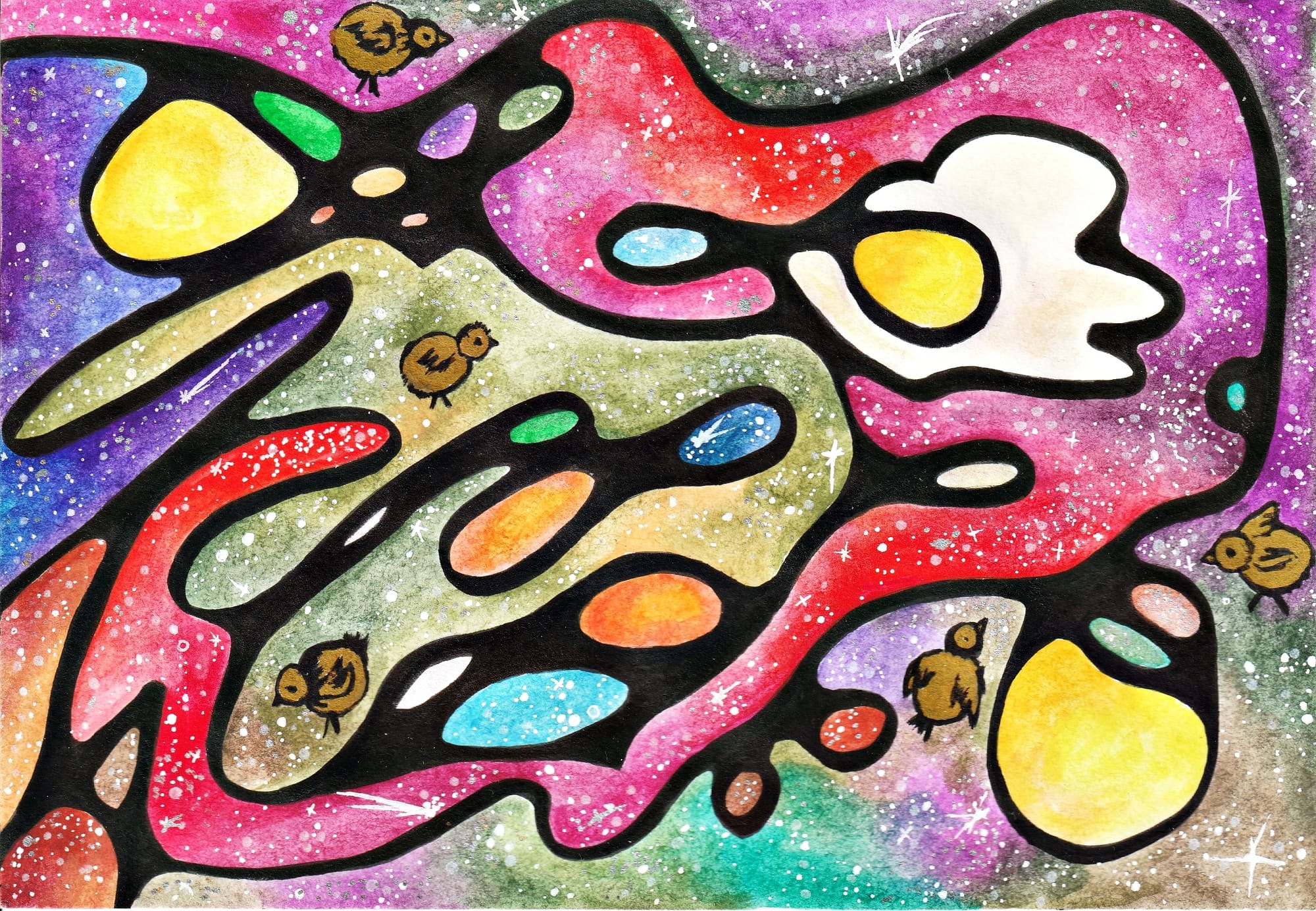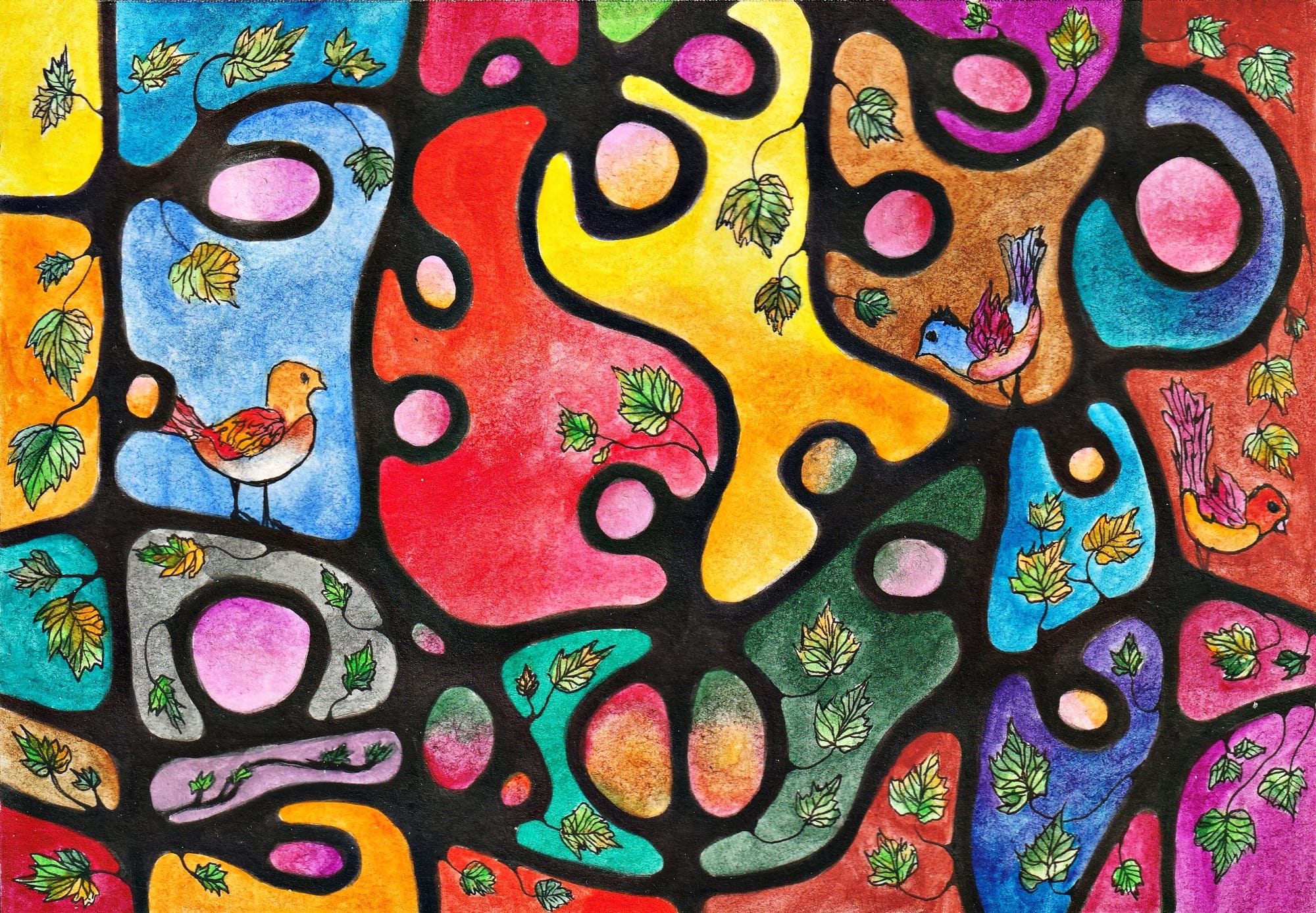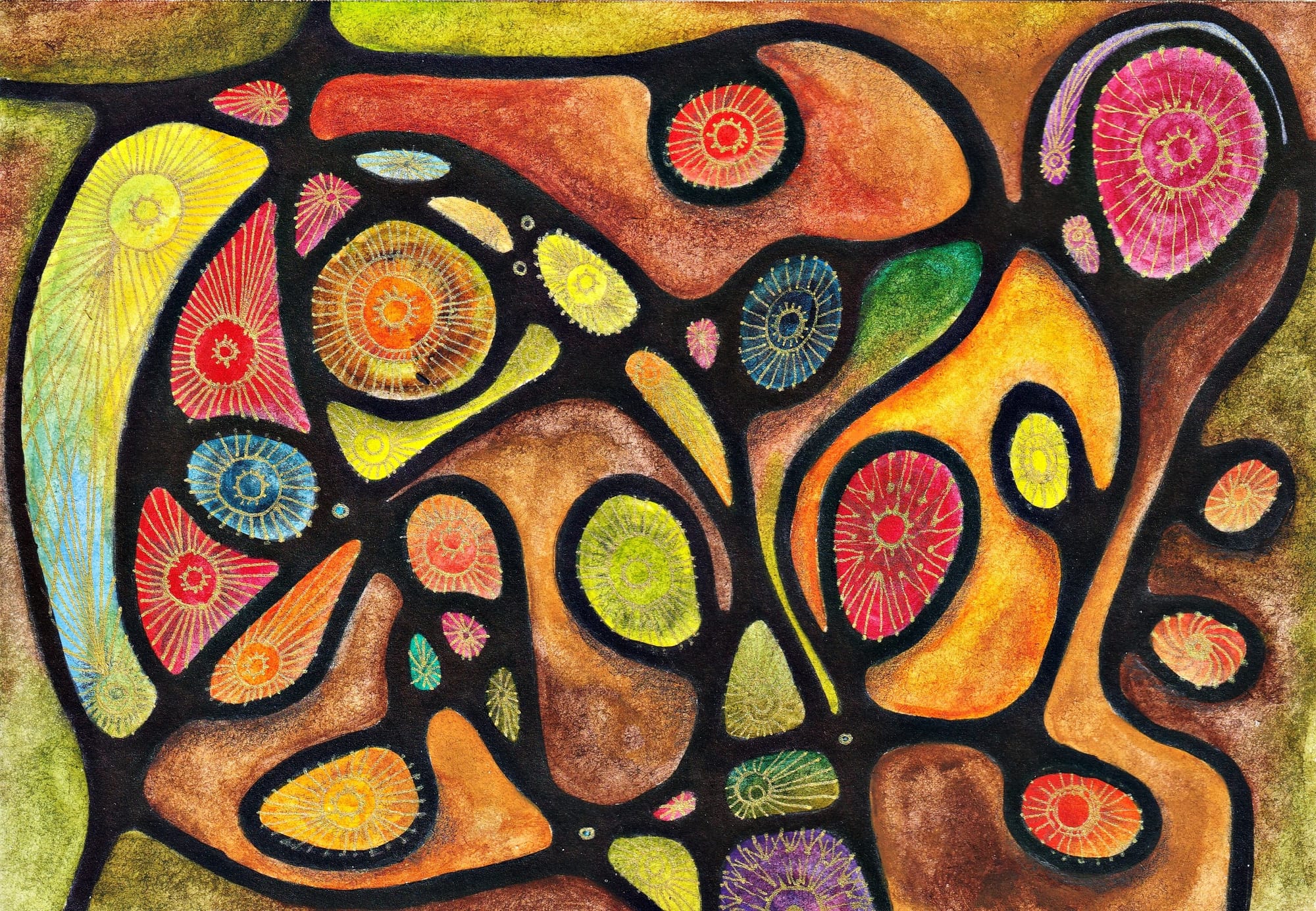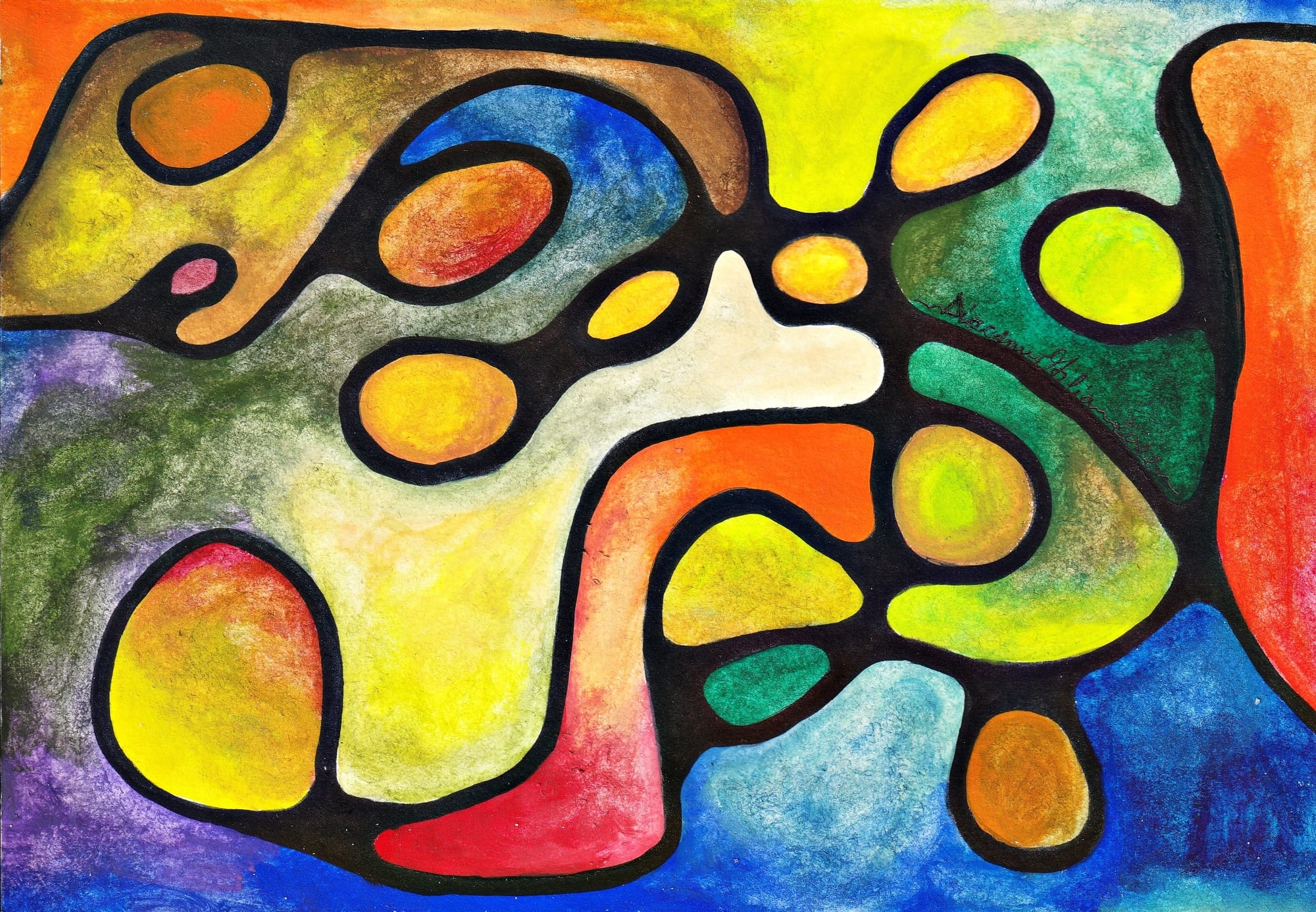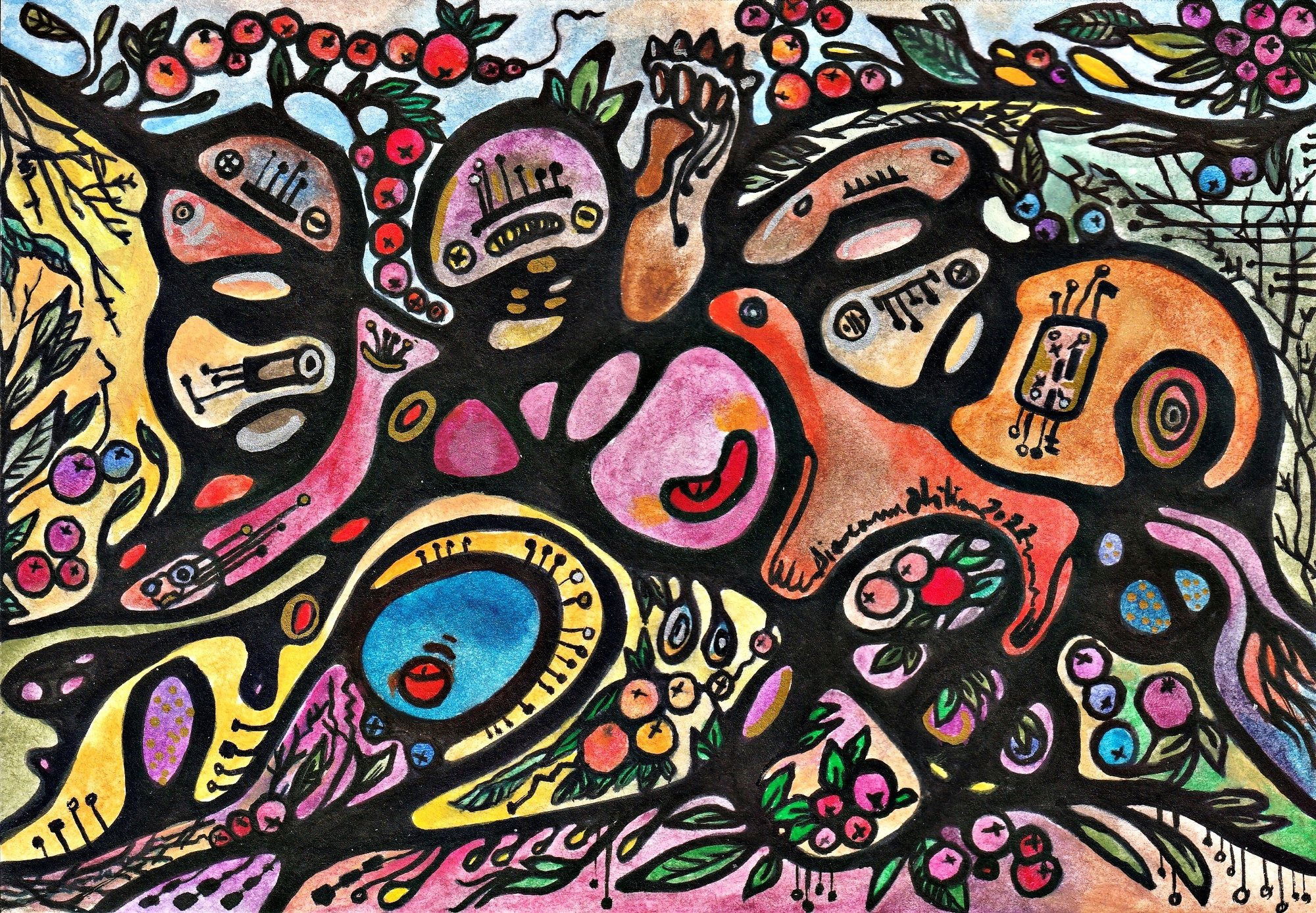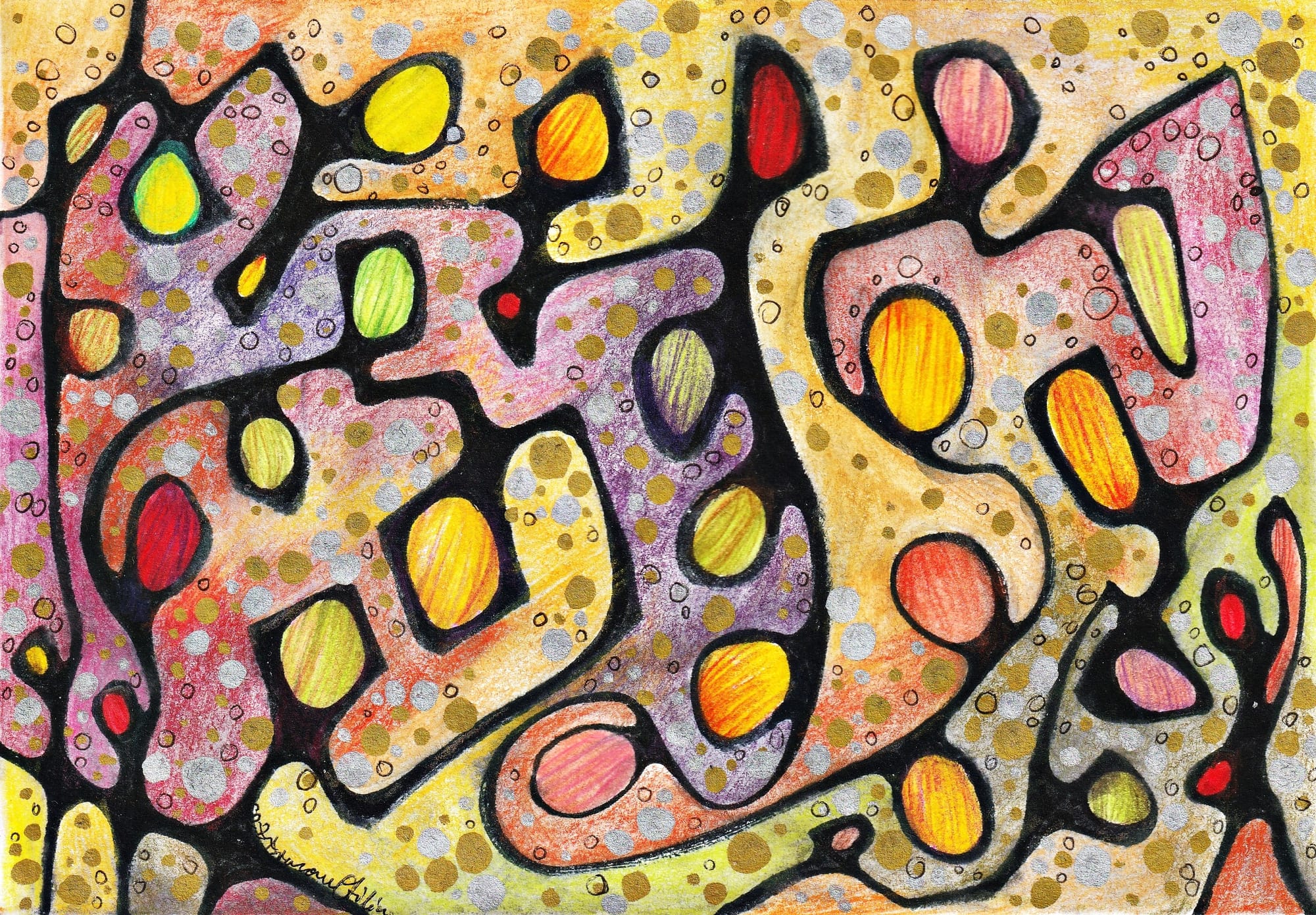MY ART PROJECTS
Learn more about my art experiments below.
In addition to my completed artworks, I also enjoy sharing my work in progress pieces, offering a glimpse into my artistic process and creative journey. These pieces reflect my dedication to continuous learning and experimentation, as I strive to push the boundaries of my artistic skills and explore new techniques and styles. From concept sketches to preliminary studies, my work in progress pieces showcase my artistic evolution and provide a glimpse into my artistic vision and creative process.
Using my skills in graphite and charcoal mediums, I strive to capture the unique features and expressions of my subjects, resulting in detailed and captivating portraits that showcase my artistic ability and attention to detail.
Pencil EXPERIMENTS
As an amateur artist, I've always found colour to be quite intimidating. That's why I turned to pencil as my preferred medium for a long time.
When I first started with traditional art, I developed a strong affinity for pencil as my preferred medium, finding colour to be a little intimidating. Over time, I have honed my skills in various shading techniques, including hatching, cross-hatching, stippling, and blending, utilizing different levels of pressure to achieve a wide range of tones and textures in my drawings. Particularly, I find smudging techniques to be highly effective in capturing realistic skin textures.
I enjoy pushing the boundaries of conventional pencil usage by employing unconventional tools and techniques such as cloth, sponge, and even my fingers to create intriguing textures and patterns in my artwork, especially in portraits, which adds expressive depth to my drawings.
I have also experimented with the underpainting technique, initially exploring it with pencil portraits by wetting the paper and allowing it to dry between a stack of books, or by staining the paper with watercolours before commencing the drawing. I find that this technique intensifies the pencil and adds depth to the portrait. Additionally, I have utilized markers or posca for an "under painting" effect in some of my pencil artwork.
In many of my pieces, I combine pencil with ink or watercolours, often opting for black as a go-to colour, to create a more dramatic look. For highlights, I rely on white gel pens or posca, as well as eraser pencils. White posca and black ink are versatile in salvaging any mistakes or refining details that may be challenging with erasing at later stages.
For a strikingly dramatic effect, I have also experimented with reverse drawing, where I start with covering the paper with graphite or charcoal and then use an eraser or kneaded eraser to "draw" by selectively removing the graphite or charcoal to reveal highlights and create the image. Although I haven't tried negative drawing yet, I am open to exploring it in the future.
While hyperrealism is intriguing, I find it to be a challenging pursuit due to the required patience. I have attempted hyperrealism in some of my drawings with varying success, but it is not my primary focus.
In terms of pencil grades, I find that B (soft) is most suitable for shadows as it allows for smooth blends, while HB or H (hard) pencils are my preferred choice for sketching.
Although I have experimented with blending stumps and tortillons, I still find that finger smudges yield the smoothest effect and the best gradation of tones in my drawings.
To better understand values, I have found pencil overlays and graded washes to be valuable exercises. Graded washes involve using graphite pencils to create smooth transitions of value, starting with a light tone and gradually building up layers of graphite to achieve a range of values. Additionally, I occasionally create monochromatic drawings, utilizing a single colour pencil to explore different shades and tones of that colour.
As an extension of these exercises, I also enjoy working with mixed media, combining pencil with various other mediums such as watercolour, ink, or pastel to create unique artwork. This allows me to experiment with colour and texture while still utilizing pencil as the foundational base. In particular, I often incorporate pencil linework on top of watercolour paintings to create striking contrasts in my artwork.
It's a visual feast that showcases my artistic growth!
Employing various techniques, I aim to bring these subjects to life on paper, infusing my artwork with colour, depth, and texture to create visually captivating and engaging pieces.
Watercolour EXPERIMENTS
Watercolours can be unpredictable, but that's part of the beauty of the medium. I like to embrace the happy accidents and let my creativity flow!
One aspect that captivated me when I first began working with watercolours was the simplicity with which muted colours reminiscent of graphite could be achieved, likely due to my initial use of watercolours in combination with pencil.
As I delved deeper into watercolour painting, I found myself drawn to experimental colour mixing techniques such as wet-on-wet, wet-on-dry, and glazing, which allowed me to create captivating colour combinations and effects. I also enjoy pushing the boundaries by experimenting with complementary colours, analogous colours, and triadic colours to achieve unique and harmonious colour palettes, even if they may sometimes result in earthy tones.
Exploring different colours, brush sizes, and water-to-paint ratios has been an exciting aspect of my artistic process as well. Wet-in-Wet techniques are particularly fascinating to me, as they produce mesmerizing paintings. To further enhance my wet-in-wet watercolour paintings, I have incorporated techniques such as using salt or bleach/alcohol. Sprinkling a pinch of salt onto wet watercolour paint creates captivating textures as the salt absorbs the paint, and I have experimented with various types of salt and amounts to achieve different effects.
Bleach has also been a valuable addition to my lifting techniques, as it enhances the colour blooms. By applying watercolour paint to dry paper and then lifting the paint off the paper with a clean, damp brush or cloth, I can create highlights or textures, and I often experiment with different lifting techniques such as blotting, dabbing, or dragging to achieve diverse effects.
I also appreciate the dynamic effects of granulation, which I achieve by using watercolour paints that contain granulating pigments. These pigments settle unevenly on the paper, resulting in a speckled or granulated appearance that adds an interesting and textured effect to my paintings.
I enjoy exploring unconventional tools and techniques in my watercolour paintings, such as sponges, plastic wrap, toothbrushes, paper rolls, cotton buds, or credit cards, which create unique textures and patterns. Experimenting with different techniques and tools always yields one-of-a-kind effects in my artwork.
For instance, splatter and spray techniques using a toothbrush, spray bottle, or other tools can create captivating textures, patterns, and atmospheric effects in my paintings.
I have also ventured into glazing or gradient washes, which involve applying watercolour pigments from light to dark or vice versa while the paper is wet or damp, to achieve smooth gradients of colour. Through experimentation with different colour combinations and blending techniques, I have gained a deeper understanding of colour theory and the ability to create depth in my artwork. Applying multiple layers of transparent watercolour washes, allowing each layer to dry before applying the next, can result in rich, luminous effects as the layers build up, making it a fantastic way to explore colour mixing and layering.
The classic dry brushing technique is also a staple in my artistic repertoire. By using a dry brush with minimal water and paint on dry paper, I can create crisp lines, rough textures, and interesting effects, particularly when depicting foliage, grass, or other natural elements. This technique is particularly effective for creating textures such as fur or tree bark.
Masking fluid or masking tape are tools I often employ to create areas of white or preserve specific sections of my paintings from being painted over. The satisfaction of removing the masking fluid or tape once the paint has dried and revealing the preserved areas, with their sharp edges and interesting contrasts, adds an additional layer of artistic expression to my watercolour paintings.
I am also eager to explore negative painting as a technique. Similar to pencil drawing, this approach involves painting the space around the subject to create a silhouette effect. I believe this technique has the potential to offer exciting opportunities for experimentation with composition and create unique, abstract watercolour paintings.
Whether it's the vibrancy of jelly gouache, the versatility of acrylic gouache, or the expressive possibilities of artistic designer gouache, I harness the inherent characteristics of each medium to create captivating landscapes that showcase my artistic skills and creativity.
Gouache EXPERIMENTS
Gouache is a versatile and opaque water-based medium that allows for great experimentation and endless creativity. I like to push the push the boundaries of what I can do with this versatile medium!
As an artist, I love to experiment with different types of gouache paints, including jelly gouache, artistic designer gouache, and acrylic gouache. I am amazed by the opacity of jelly gouache, the velvety texture of designer gouache, and the water-resistance of acrylic gouache, which allows me to create unique effects in my artwork.
One of my favorite techniques is dry brushing, which creates textures and patterns. Applying gouache on dry paper, with quick, scrubbing motions creates very interesting and expressive marks. I also experiment with layering gouache paint to create depth and texture in my artwork. I start with a light layer of paint and build up the layers to create a rich, opaque effect. For diluted gouache, glazing is one of my favourite techniques. It's all about patience, layer thin, translucent layers of gouache paint on top of dried layers to create rich and luminous effects. This technique allows me to experiment with different colour combinations and with different layering techniques to create depth and dimension in my artwork. I usually apply thick, opaque layers over dry layers or wet-on-wet techniques to achieve different effects.
Wet-in-Wet and Wet-on-Dry experiments can create interesting textures, blends, and visual effects. I usually like to wet the paper first, then I apply gouache paint for backgrounds or underpaintings. Mixing up these techniques is excellent for landscapes. I like applying gouache paint to dry paper and then wetting it with a brush to achieve different results.
I enjoy using additives such as salt, baking soda, or dish soap to create textures or effects in my gouache paintings, like salt textures or gritty textures from baking soda mixed with gouache.
Brushes and tools also play a role in my experimentation with gouache. Using different types of brushes, such as flat brushes, round brushes, or fan brushes, different brush sizes, or brush techniques can create different marks and textures with gouache. Other tools, such as sponges, palette knives, or stencils create interesting effects and patterns. I also like to experiment with dry brushes, wet brushes, stippling, splattering, or even palette knife techniques to create unique and expressive effects.
I usually create splatter effects by using a brush or toothbrush and having different colours can create interesting texture and movement in my artwork. I also experiment with scraping techniques some time: once my gouache paint has dried, I use a scraping tool, such as a credit card, palette knife, or toothbrush, to scrape away some of the paint to create textures, patterns, or highlights. Experimenting with different scraping techniques and pressures can achieve different effects. From the scraping techniques I especially like sgraffito with gouache, where you apply a layer of gouache paint, then use a pointed tool, such as a toothpick or the end of a brush, to scratch through the wet paint and reveal the layer underneath. This can create very interesting textures and patterns. Then scumbling with different colours and brush techniques is also great to achieve different textures and patterns. For this technique I apply a thin layer of opaque gouache over a dried layer of gouache with a dry brush or sponge to create a rough, textured effect.
I've also used stencils and string to create interesting textures and patterns in my artwork. Mixing gouache with various texture mediums, such as gels, pastes, or granules can create interesting textures on my painting surface. Different additives and application techniques can achieve different effects.
Resist techniques are quite amazing as well. The principle for the gouache resist techniques is applying masking fluid or other resist materials to the paper before painting with gouache, then remove it once the paint is dry to reveal the areas underneath. Different resist materials, such as wax or frisket, and different painting techniques over the resist areas create interesting contrasts and textures. I also use masking tape, frisket, or masking fluid to create areas of white or preserve certain parts of my painting.
I'm equally enjoy experimenting with layering gouache to create transparent effects. The classic way is the best in this case. I dilute gouache with water to create translucent layers that allow the colours underneath to show through, creating subtle gradients, glazing, or other transparent effects in my artwork. Transparent washes of colour creates such interesting depth and watercolour-like effect.
Additionally, I often experiment with different surfaces. I've done gouache paintings on paper, cardboard, canvas and wood. I love the texture of gouache on all of these surface and depending on the surface I can experiment with different techniques.
Gouache monoprints are a fun experiment as well. To these I apply gouache onto a smooth surface, such as glass or plastic, then press a piece of paper onto the painted surface to create a monoprint. Different colours, patterns, and pressure will create unique and abstract prints.
I mostly experiment with colour mixing in gouache to create unique colour palettes. Gouache has a wonderful ability to mix smoothly and produce vibrant colours. Same as with watercolour I like to mix complementary colours, analogous colours, or triadic colours to create interesting and harmonious colour combinations.
I also like to combine gouache with other art materials, such as watercolour, ink, or coloured pencils, to create mixed media artworks. Different combinations of materials and techniques to create unique and layered effects.
Gouache allows for easy colour mixing with other water-based mediums, such as watercolour or acrylic, to create interesting mixed media effects. I especially like the gouache and ink combinations. I use ink for line work, details, or textures, and then layer gouache on top for bold and opaque colours.
I have a strong affinity for shine and sparkle, which naturally draws me to the captivating metallic effects of gouache. I enjoy experimenting with mixing metallic gouache paint with other colours to create a diverse palette of metallic shades, as well as layering metallic gouache over other colours to achieve intriguing visual effects.
In my monochromatic studies, I find gouache to be a perfect medium as it allows me to easily achieve different values and tones within a single colour. I enjoy exploring various techniques, such as mixing different shades of the same colour, adding white or black to create tints or shades, and varying the opacity of the gouache paint to create monochromatic studies with depth and dimension. I also experiment with different dilutions of colour to observe how gouache behaves with varying levels of water, resulting in a range of values.
I am also keen to further explore techniques such as stencilling and impasto effects with gouache. Stencilling allows me to create crisp and clean shapes or patterns with gouache, and I enjoy experimenting with different stencil designs, sizes, and placements to create unique compositions and visual effects. I don't usually buy that many stamps or stencils, because I often create my own stencils using everyday objects, such as straws, paper rolls, or cut-outs, to add a personalized touch to my artwork.
To create the impasto effect, I apply thick and textured layers of gouache paint onto my chosen surface, be it paper or wood panels. I utilize palette knives, sponges, or other tools, such as old credit cards, to apply the gouache in thick layers, resulting in a three-dimensional appearance in my artwork.
In addition to these techniques, I am also interested in experimenting with collage and negative painting in my gouache paintings. Collage involves using gouache paint to create a range of painted papers, which can then be used to create collages with different patterns, textures, and shapes. This allows for endless creative possibilities in creating unique compositions. Negative painting, though challenging, offers the opportunity to paint the negative space around objects or shapes, creating depth and dimension in my artwork. I look forward to pushing my artistic boundaries and exploring the exciting possibilities that gouache offers through these techniques.
With a keen eye for detail and a mastery of these diverse mediums, I skillfully bring my artistic visions to life on canvas, creating visually striking and emotionally evocative artworks. From the versatility of acrylics to the richness of oil paints and the unique properties of gouache, I employ these mediums to create compelling compositions that captivate the viewer's imagination and showcase my artistic proficiency.Edit
EXPERIMENTS on Canvas
Canvas, as a surface for painting, offers remarkable versatility and adaptability for a wide range of art mediums. I thoroughly enjoy the process of experimenting with different mediums on canvas, whether it be on traditional white or black canvases mounted on a sturdy chassis, or on cardboard canvases for a more unconventional approach.
I particularly enjoy utilizing gouache and acrylics on cardboard canvases, as I find these mediums to be highly adaptable and conducive to creating detailed and intricate artwork when combined with inks and marker linework. I experiment with various techniques, such as monoprinting, layering, glazing, impasto, and stencilling, to create unique compositions and textured effects on canvas.
I experiment with creating monoprints by applying acrylic paint to a flat surface, such as a plastic sheet or glass, and transferring the paint onto the canvas. I like to try different paint consistencies, textures, and layering techniques to create unique and interesting compositions. Layering and glazing techniques can create interesting colour combinations and translucent effects on canvas. I also enjoy utilizing palette knifes to apply thick, textured layers of acrylic paint to create impasto effects, to add depth and dimension to my artwork and to create interesting tactile surfaces. And I use stencils with acrylic paint to create patterns, shapes, or textures in my artwork.
In my exploration of colour, I often experiment with colour mixing, colour schemes, and colour contrasts on canvas to create dynamic and visually captivating colour relationships in my paintings. I love colour play and I employ complementary, analogous, or triadic colours to add visual interest and harmonies to my artwork.
I also enjoy incorporating different art mediums, such as acrylics, oils, inks, charcoal, or pastels, in my mixed media artworks on canvas. Through experimenting with different combinations, layering techniques, and application methods, I strive to create unique and textured effects that add depth and dimension to my artwork.
In addition, I have experimented with abstract expressionist techniques, such as action painting or gestural painting, to create spontaneous and expressive artworks on canvas. By employing various brushwork, mark-making, and colour choices, I aim to create dynamic and emotive compositions.
Texture building and collage techniques have also caught my attention as intriguing possibilities to further explore. I use palette knifes, sponges, brushes, or other tools to apply thick layers of paint and I am keen to experiment with different texture-building techniques, such as the use of gesso, modelling paste, or collage elements, to create interesting and tactile surfaces on canvas.
Similarly, I have been inspired by fascinating collage pieces on canvas that incorporate diverse materials, such as paper, fabric, found objects, or photographs, to create visually intriguing and textured compositions. I think I would also enjoy experimenting with different adhesive techniques, layering methods, and composition ideas to create visually intriguing and textured collages.
Image transfer is another technique that I am interested in trying, utilizing methods such as gel transfers, solvent transfers, or heat transfers to transfer printed images or photos onto the canvas surface, resulting in unique and layered effects. Although I find pouring and dripping techniques with acrylic paints or other fluid mediums visually satisfying and capable of creating abstract or expressive effects on canvas, I am mindful of the potential wastefulness of materials and messiness associated with some of these techniques, and therefore may limit my experimentation with acrylic pouring.
Join me on this visual adventure of creativity and expression!
Whether I'm depicting the majesty of nature or the tranquillity of the countryside, my mastery of soft pastels and oil pastel paintings allows me to create highly detailed and emotionally resonant landscapes that showcase my artistic talent and creativity.
Pastels EXPERIMENTS
With delicate strokes, dreamy hues, interesting chalky or waxy textures, pastels are perfect for soft, serene and simply stunning paintings. Pastels are magical, captivating colours that create timeless art and offer endless inspiration.
Blending techniques are a significant aspect of pastel art, offering a plethora of possibilities for experimentation. Whether working with soft pastels or oil pastels, I derive great satisfaction from exploring various blending techniques, employing my fingers, blending stumps, tissue paper, or brushes to achieve smooth or textured effects. I particularly enjoy the process of blending different colours together to create new colours, gradients, and transitions, as well as experimenting with layering and overlapping different pastel colours to produce visually captivating textures and effects.
Combining colour blending directly on paper can yield a host of results, including the creation of new colours and smooth gradients. I am fascinated by the interplay of different colour schemes, contrasts, and harmonies, which can add visual interest and dynamism to my artworks. Furthermore, I experiment with blending pastels using solvents, such as mineral spirits or rubbing alcohol, which can create smooth or painterly effects in my artwork. I employ brushes or blending tools to apply the solvent to the pastel, allowing me to blend and manipulate the colours on the paper to achieve my desired effects.
In addition to colour blending, I also engage in experimentation with different colour combinations, contrasts, and harmonies using pastels. I often employ complementary colours, analogous colours, or triadic colours to create visual interest and depth in my artwork. Exploring various colour temperatures, values, and intensities allows me to achieve unique colour effects in my pastel art.
I've also tried sgraffito techniques with pastels, where you scratch through the layers of pastel to reveal the underlying colours or create textures. Using different tools such as pencils, pastel sticks, brushes, or palette knives can create different types of sgraffito effects and add detail to your artwork.
In addition I experiment with layering pastels quite often to create depth and dimension in my artwork. I enjoy layering pastels of different colours, values, and intensities to create interesting effects and build up textures. I've also tried underpainting techniques, where you apply a layer of pastels as an initial base, then layer other pastels on top. It creates very pleasant artwork, giving depth and luminosity depending on the colours of choice. Moreover I like using layering to create an underpainting technique with pastels. I start by creating an initial layer of pastels using a limited colour palette or monochromatic tones as an underpainting. Then I apply additional layers of pastels on top to create depth, dimension, and visual interest in my artwork.
Experimenting with the "dry on dry" or "dry on wet" techniques using different colours can create interesting effects and visual contrasts. Using pastels dry and then wetting them with water or other solvents creates different effects. Wetting pastels usually creates interesting washes or blended effects, while using them dry allows for more control and precise mark-making.
Wet techniques, such as wetting the paper before applying pastels or using a wet brush to blend the pastel strokes, can yield fascinating and unpredictable effects. Additionally, using pastels to create impressionistic effects with short strokes or dots of color to suggest the subject or scene, rather than rendering it in detail, provides me with a unique and intense color palette to experiment with. When the color intensity needs adjustment, I also experiment with blotting and lifting techniques using pastels. Tissues, paper towels, or other absorbent materials can be used to lift off or blot the pastels from the paper, creating interesting patterns, textures, and negative spaces in my artwork. I also experiment with creating negative space in my pastel paintings by leaving areas of the paper untouched or using erasers or other tools to remove pastel.
When using wet techniques, I enjoy experimenting with fixatives and water in the same piece to create different effects with pastels. I use fixative sprays to set the pastel and create a workable surface for additional layers. And spraying water on the pastels creates interesting watercolour-like effects or it can help me blend and manipulate the pastel pigments. Then pastel fixative sprays or workable fixatives can help create resist techniques with pastels. On big pieces I like to experiment with applying fixative to the paper before or after applying pastel to create areas that repel or resist the pastel, allowing me to create interesting textures, patterns, or effects.
Incorporating different texture-building techniques with pastels, such as using textured papers or adding texture mediums to the surface, with additional scratching or scumbling techniques helps me create interesting textures and patterns as well.
I love experimenting with different mark-making techniques with pastels. I have tied various tools, from my fingers, edges of pastels, to more unconventional mark-making tools, to create unique and expressive marks on the paper. Based on my experiments, I like using cotton swabs and sponges, but nothing works better than my fingertips, to apply pastels and create unique marks and textures in my artwork.
I also enjoy to experiment with different tools and techniques to discover new ways to apply pastels and I also try different techniques, such as sgraffito, scumbling, or stippling, to create interesting textures and effects.
Alternative surfaces make for great experiments as well for my pastel artworks. apart from traditional paper I have used pastels on sanded paper, pastel boards, tone paper, cardboard or canvas to create unique textures and effects. I would also like to experiment with more unconventional surfaces, such as wood or fabric, to create interesting and more unexpected results. Try experimenting with different types of surfaces for your pastel artworks. So far I think toned paper best suits my style, but I like to incorporate pastels in other type or paintings to achieve the desired results.
I usually combine pastels with other mediums, such as charcoal, pencil, or ink, to create mixed media artworks. And I use pastels to add colour and vibrancy to my mixed media pieces. Or I use them as accents to create focal points, sometimes.
Whether it's the fluidity of wet-in-wet, the depth achieved through layering, the textural effects of dry brush, the unique patterns of blooms, or the complexity of underpainting, I employ these techniques to create rich and dynamic compositions that showcase my artistic expertise and creative ingenuity.
Mixed Media Art EXPERIMENTS
Embrace the Limitless Possibilities of Mixed Media Art to Unleash Your Artistic Fusion. With boundless creativity and limitless imagination, mixed media techniques allow me to create unique and captivating artworks. That's why I'm very passionate about working with this versatile and dynamic medium.
When it comes to mixed media artwork, the possibilities for experimentation are vast and limitless. I find great joy in seamlessly combining traditional painting and drawing techniques with diverse materials to create captivating mixed media pieces. Through the skilful utilization of acrylics, oils, watercolours, pastels, charcoal, ink, markers, and other mediums, I strive to achieve intriguing textures, striking contrasts, and mesmerizing effects.
I am also drawn to the intriguing world of collage and painting fusion in my artistic endeavours. Beginning with a collage base crafted from an array of materials such as papers, fabrics, or textures, I then overlay it with acrylics, oils, or watercolours, experimenting with various layering techniques, opacity levels, and colour combinations to produce one-of-a-kind mixed media artworks that exude creativity and originality.
As an artist, I relish the opportunity to explore the interplay of different art mediums, ranging from acrylics, oils, watercolours, pastels, inks, to even digital elements, in my creations. Through the process of layering, blending, and overlapping these mediums, I am constantly intrigued by the dynamic visual effects that unfold, as I seek to push the boundaries of artistic expression.
In my pursuit of innovation, I am also eager to experiment with unconventional materials in my mixed media works. From coffee grounds, sand, leaves, to even food items, I am intrigued by the textures, patterns, and effects that these unique materials can bring to my art. By seamlessly combining these unconventional materials with other mediums and techniques, I aspire to create visually captivating and innovative mixed media artworks that defy conventions. Through deliberate layering, blending, and overlapping, I aim to achieve unexpected and unparalleled effects that captivate the viewer's imagination.
The exploration of mark-making techniques also serves as a rich avenue for experimentation in my art. I delight in employing a wide array of tools and materials, such as pencils, charcoal, ink, stamps, or unconventional mark-making tools, to discover diverse textures, patterns, and lines that lend my artwork a distinctive visual appeal and expressiveness.
In my pursuit of texture building, I revel in the opportunity to experiment with a diverse range of techniques and materials to create captivating textures and surfaces that lend depth and dimension to my art pieces. Everyday household items like bubble wrap or cardboard often yield surprising results, while gesso, modelling paste, or sand offer exciting avenues for further exploration.
Moreover, I am deeply fascinated by the creative possibilities offered by resists and masking techniques in my mixed media artwork. Through the deft application of masking tape, frisket, or other materials, I can create areas of white or preserve certain parts of my artwork, lending it an intriguing visual appeal. I have also experimented with resist techniques, such as wax or masking fluid, layering them with other mediums like paint, ink, or collage, and subsequently removing the resists or masking materials once the mediums are dry to reveal the protected areas. The resulting contrasts and negative spaces add a captivating depth and visual interest to my mixed media artworks.
In my ongoing pursuit of artistic innovation, I am also eager to experiment with incorporating text and typography into my artwork. While I have previously employed handwritten text in my creations, I am eager to explore the inclusion of printed text, stencils, stamps, or collage letters. I believe that the incorporation of meaningful messages can elevate my artwork, adding a layer of storytelling and visual interest that resonates with viewers. Additionally, I am intrigued by the possibilities offered by image transfer techniques and collages in my mixed media artworks, as they open up new avenues for creativity and self-expression.
FAQ
Q: What is neurographic art?
Q: How is neurographic art created?
Q: How is neurographic art different from other forms of art?
Q: How can I get started with neurographic art?
Q: Can neurographic art be used in art education or workshops?
Q: What are the benefits of neurographic art?
Q: Do I need to be an artist to do neurographic art?
Q: How does neurographic art work?
Q: What materials are typically used for neurographic art?
Q: Are there any specific techniques or guidelines for creating neurographic art?
Q: Can neurographic art be done digitally?
Q: Is there any scientific evidence to support the benefits of neurographic art?
Q: Can neurographic art be therapeutic?
Q: Can neurographic art be exhibited or sold?
Neurographic art
HAS SEVERAL POTENTIAL BENEFITS, INCLUDING:
- Stress reduction: The calming, meditative and mindful nature of neurographic art can help reduce stress and promote relaxation by focusing the mind and releasing tension.
- Self-expression: Neurographic art allows artists to explore their inner thoughts, emotions, and experiences, providing a creative outlet for self-expression and reflection (expressing emotions, thoughts, and experiences in a non-verbal and visual way).
- Personal growth: The process of creating neurographic art can facilitate self-awareness, insight, and personal growth, as artists engage with their thoughts and emotions in a creative and meaningful way.
- Mindfulness: Neurographic art encourages mindfulness by promoting present-moment awareness and deep focus on the creative process, helping artists develop a greater sense of mindfulness in their everyday lives.
- Creativity: Neurographic art stimulates creativity by encouraging free-flowing lines and patterns, allowing artists to explore their imagination and create unique and abstract designs.
- Intuition: Neurographic art encourages individuals to tap into their creative instincts and trust their intuition, leading to enhanced creativity and self-discovery.
- Emotional exploration and self-awareness: The process of creating neurographic art can help individuals explore their emotions and thoughts on a deeper level, leading to increased self-awareness and self-understanding.
- Focus and concentration: The intricate patterns and details in neurographic art require focus and concentration, helping to improve cognitive skills and mental clarity.
- Self-reflection and self-awareness: The process of creating neurographic art can be introspective, allowing artists to explore their thoughts, emotions, and experiences through the artistic process.
- Fine motor skills development: The precise movements involved in drawing and colouring neurographic art can help develop fine motor skills and hand-eye coordination.
Join me on this artistic journey as I explore various mediums and unleash my creativity in a multitude of ways. Come and experience the rich and diverse world of my art!






